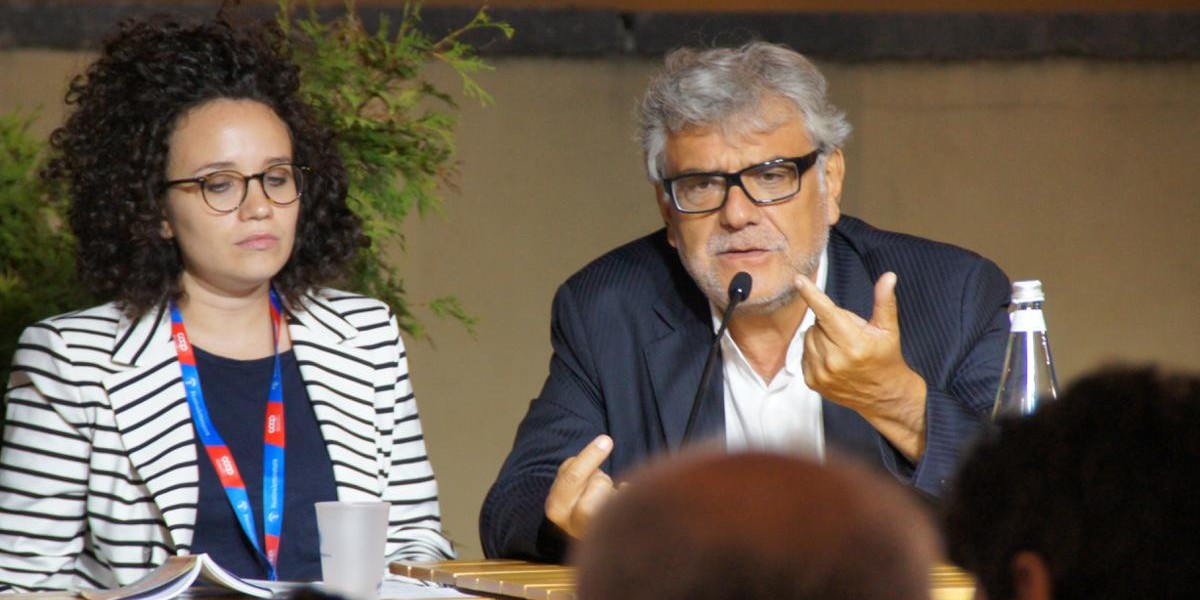
The evolution of the small screen in Italy and America
What’s the secret behind that addictive component in TV series? In the past two decades, new technologies and the explosion in the number of genres and channels has transformed the way series are made. The most notable impact of this shift is, without any doubt, the emergence of highly complex and elaborated forms of serial narrative. Jason Mittell, the author of Narrative Complexity, along with the Italian authors Roberto Constantini and Giancarlo de Cataldo, debate on how TV has evolved since the late 90s, both in the US and in Italy.
This tendency started at the end of the last century in the U.S, with series as The Sopranos or Buffy, the Vampire Slayer: each episode had a clear structure, using experimental techniques such as flashback, flashforward or foreshadowing. Something distinct in respect with the past could be appreciated: the audience was expected to watch everything in sequence.
(caricamento...)
In the early 2000s, dramas such as Lost, The Wire, Deadwood and 24 began to cross the boundaries between literature and audio-visual content, but comedy programmes like How I Met Your Mother and Arrested Development soon started to become part of this phenomenon too.
Romanzo Criminale arrived in Italy, a series adapted from the film of the same name and inspired by De Cataldo’s homonymous novel, and if the film is said to have reintroduced the crime genre to Italian cinema, the series inaugurates this complex kind of television in Italy. De Cataldo reckons this is due to the scenarios that, somehow, relate to the country, and the fact that the spectator has freely chosen to watch it. Therefore, it’s no surprise that Romanzo Criminale breaks with what it traditionally seen on Italian television. Despite that from the 60s to the 80s, TV in Italy had been something of a “experimental laboratory” according to the author, no other series had been able to achieve this level of success.
Complex TV uses literature’s strength and borrows a new kind of plot, conflicts and characters from it. And probably here lies the clue: how characters are created fully rounded. The spectator gets captivated with the story because of the characters. Very often, they’re depicted through a dialogue with themselves in order to show their own struggles, instead of using traditional dialogues. This is a technique that is difficult to use in books; this is more about images than words, and it is used frequently in complex TV series.
That’s when the audience is shown an excerpt from True Detective, in which the character is holding an imaginary conversation. Not only do we question what’s going on with our character, but also why are they telling us the information that way and at what point we find ourselves in the story sequence. According to Mittell, that’s how the number of questions we have increases, and thus, emerges an investigative fandom that ties up loose ends and that focuses on the storytelling. A new kind of spectator is born, one that demands a certain level of engagement.
The climax of this type of narrative was perfected with Lost and lives on nowadays in series like Game of Thrones, a historical programme that presents the anomaly of having overtaken in time the original book series.
That’s how series become addictive, while adding that element of deepness that once belonged to cinema; while a film is “an economic story”, according to the speakers, series could be defined as a compound art.



